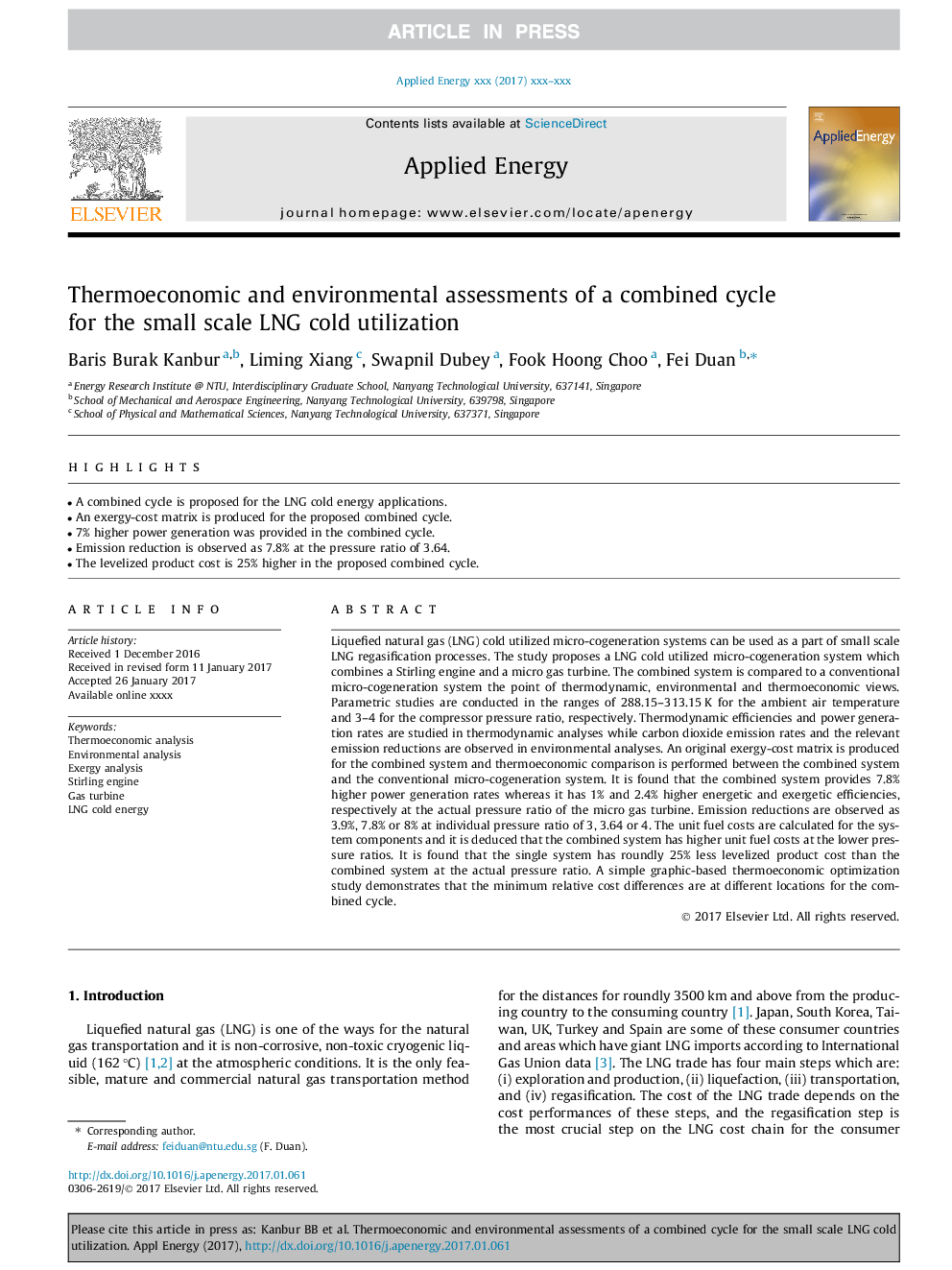| Article ID | Journal | Published Year | Pages | File Type |
|---|---|---|---|---|
| 4916125 | Applied Energy | 2017 | 15 Pages |
Abstract
Liquefied natural gas (LNG) cold utilized micro-cogeneration systems can be used as a part of small scale LNG regasification processes. The study proposes a LNG cold utilized micro-cogeneration system which combines a Stirling engine and a micro gas turbine. The combined system is compared to a conventional micro-cogeneration system the point of thermodynamic, environmental and thermoeconomic views. Parametric studies are conducted in the ranges of 288.15-313.15Â K for the ambient air temperature and 3-4 for the compressor pressure ratio, respectively. Thermodynamic efficiencies and power generation rates are studied in thermodynamic analyses while carbon dioxide emission rates and the relevant emission reductions are observed in environmental analyses. An original exergy-cost matrix is produced for the combined system and thermoeconomic comparison is performed between the combined system and the conventional micro-cogeneration system. It is found that the combined system provides 7.8% higher power generation rates whereas it has 1% and 2.4% higher energetic and exergetic efficiencies, respectively at the actual pressure ratio of the micro gas turbine. Emission reductions are observed as 3.9%, 7.8% or 8% at individual pressure ratio of 3, 3.64 or 4. The unit fuel costs are calculated for the system components and it is deduced that the combined system has higher unit fuel costs at the lower pressure ratios. It is found that the single system has roundly 25% less levelized product cost than the combined system at the actual pressure ratio. A simple graphic-based thermoeconomic optimization study demonstrates that the minimum relative cost differences are at different locations for the combined cycle.
Keywords
Related Topics
Physical Sciences and Engineering
Energy
Energy Engineering and Power Technology
Authors
Baris Burak Kanbur, Liming Xiang, Swapnil Dubey, Fook Hoong Choo, Fei Duan,
